This article is written by Paridhi Goel and further updated by Shefali Chitkara. This is an exhaustive article that covers the analysis of the case of Jarnail Singh vs. Lacchmi Narain Gupta (2018), exploring the requirements of Scheduled Castes and Scheduled Tribes for getting promotions in government jobs and the creamy layer filter. This article deals with the background of the case, relevant facts, issues that were raised before the Hon’ble Supreme Court and the judgement given by the court. The author has also highlighted the judgements that were referred to in this case and the subsequent judgements that referred to the present case. Further, the significance of this case in today’s time is also mentioned.
Table of Contents
Introduction
The Supreme Court delivered its verdict on September 26, 2018 in the case of Jarnail Singh vs. Lachhmi Narain Gupta, which is also known as the ‘Reservation in Promotion Case’. A five-judge bench, which consisted of former Chief Justice of India Dipak Misra, Justice Kurian Joseph, Justice RF Nariman, Justice SK Kaul and Justice Indu Malhotra, reviewed the judgement of a previous case of M. Nagaraj vs. Union of India (2006) dealing with the reservation for the Scheduled Castes and Scheduled Tribes in promotions to government jobs or public services. This case also looked into the application of the creamy layer among the Scheduled Castes and Scheduled Tribes when applying for reservations in promotions. This aspect of the case is important because the ‘creamy layer’ is an economic criterion based on the assumption that a person is liberated from his or her backwardness due to his or her economic progress, which leads to social advancements. With this social and economic standard of the creamy layer, many people view it as caste discrimination in institutions.
Reservations have always been a controversial topic in India. Its foundation started after the Poona Pact, when Doctor B.R. Ambedkar demanded separate electorates for the Dalit community. The then described “depressed classes” were given reservations in employment with joint electorates. Gradually, it was observed that the scheduled castes and the scheduled tribes or even the backward classes, are given reservations, not because of their poverty but because they are excluded mostly everywhere. Based on this, it was decided that they should be able to represent themselves in government jobs, public services or local bodies, which is why they were granted reservations in these jobs. Since the problem of exclusion still continued, they did get the job through reservation; however, they were not favoured for promotions. Reservations in promotions were introduced for the Scheduled Castes and the Scheduled Tribes, subject to certain conditions, until the need was felt to review these conditions. This case highlights the decision of the judiciary in this regard.
Historical background of reservations
Reservation has been seen as an affirmative action in India, which is given in order to ensure that historically discriminated, underprivileged and marginalised groups are not left behind and have representation in all areas, including education, politics, etc. As per the same, the Indian government is permitted to create reserved quotas based on the provisions of the Indian Constitution, which have decreased the standards required in examinations and other vacancies for several socially and economically backward citizens of India. In India, the Scheduled Castes, Scheduled Tribes and Other Backward Classes have been provided with reservations for many years. The reservations have also been created for economically weaker sections of society (EWS), as well as per the 103rd Constitutional Amendment Act. In the beginning, it was only for the Scheduled Castes and Scheduled Tribes but after the report given by the Mandal Commission in 1987, it was extended to citizens belonging to Other Backward Classes. These special provisions highlighting the benefits given to certain categories are mentioned under various Articles of the Indian Constitution, specifically Articles 15 and 16.
The only democracy in the world that provides such provisions dealing with compensatory discrimination to advance these oppressed and disadvantaged sections of society is India. These reservations can be said to be the result of the intense social conflict that has happened historically in the country and is still believed to be controversial.
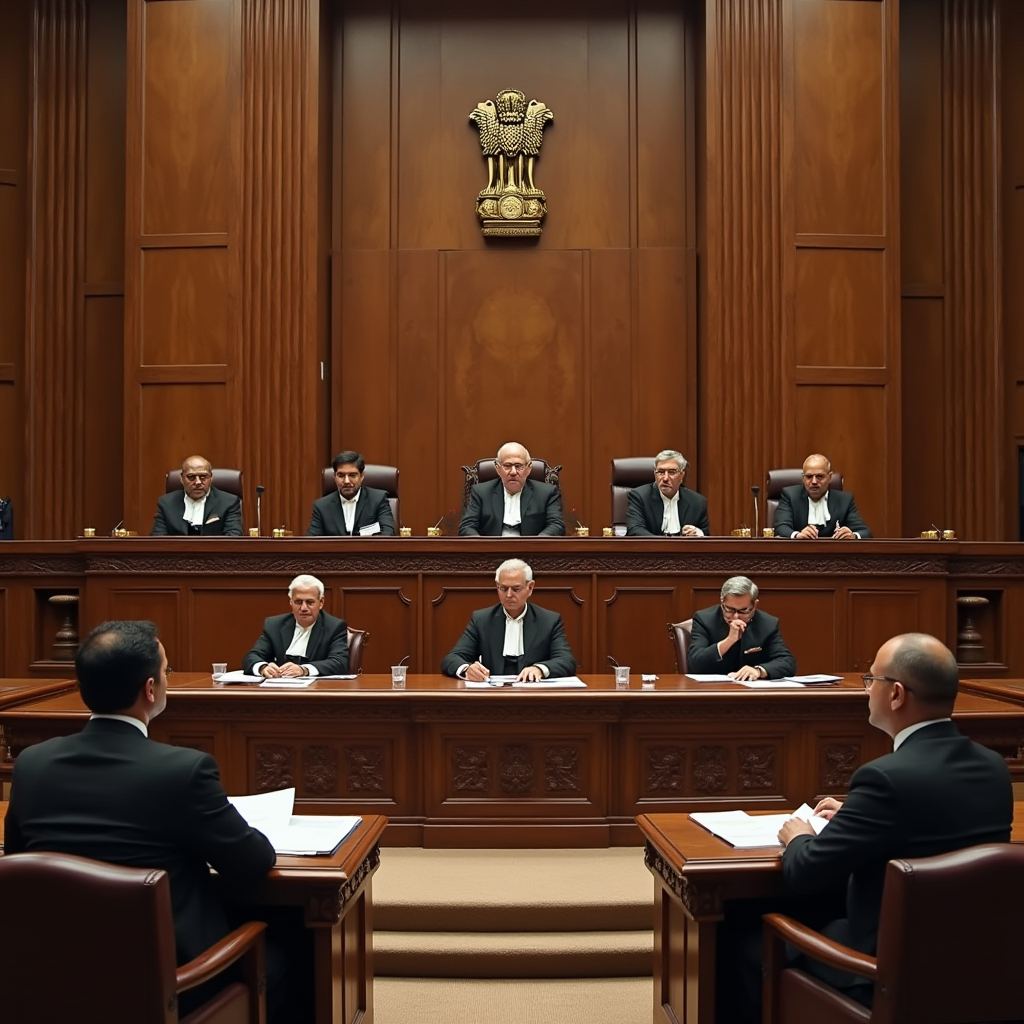
Reservations in promotion
It refers to the kind of reservation that is given to people from backward classes for their promotions in government jobs. It has always been a hotly debated subject between the Hon’ble Supreme Court of India and Parliament. It has been settled by the Supreme Court in the Indira Sawhney vs. Union of India (1992) case that there cannot be any reservation in promotions under Article 16(4). The court gave the reason that it will have a negative impact by effecting and diminishing the zeal to work effectively among the lower class people and will definitely lead to decreasing the morale of the unreserved category candidates in that office. The concept of “creamy layer” was further established, which was even extended to the SCs and STs categories of citizens. After this judgement, the Parliament made a lot of amendments to the Constitution between 1995 and 2000 that even allowed the reservation of promotion for reserved category candidates.
As per Seventy-seventh Amendment Act, 1995, Article 16(4A) was inserted in the Constitution, which allows for granting reservations in promotion to the SCs and STs by the State. The Supreme Court upheld the constitutional validity of this Article in the case of M. Nagaraj vs. Union of India (2006) by a five judge bench. Finally, the Supreme Court was approached for reconsideration of the Nagaraj judgement by a seven judge bench and in the present case, it has been taken up by a five judge bench of the Supreme Court.
The debate on the question of reservations in promotion began even before the addition of Article 16(4A). It was answered in the case of General Manager, Southern Railway vs. Rangachari (1961), where it was held by the Supreme Court that adequate representation of the backward classes is essential for their advancement and it allowed for the reservation in promotion under Article 16(4). The plea for reconsidering this judgement was also filed in the case of State of Punjab vs. Hira Lal (1970) but the same was rejected. However, this position was finally overturned in the Indira Sawhney case, wherein it was held that reservations will not be applicable in promotions because they will lead to a violation of the right to equality. In response to this case, Article 16(4A) was added by the parliament, which was then challenged in the Nagaraj case.
Details of the case
Case Title
Jarnail Singh and Others vs. Lachhmi Narain Gupta and Others (2018)
Citation of the case
(2018), 10 SCC 396
Date of the judgement
September 26, 2018
Court
Supreme Court of India
Case Type
Special Leave Petition under Article 136 of the Indian Constitution
Name of the petitioner
Jarnail Singh
Name of the respondent
Lachhmi Narain Gupta
Bench
The then Chief Justice of India, Justice Dipak Mishra, Justice Kurian Joseph, Justice R.F. Nariman, Justice Sanjay Kishan Kaul and Justice Indu Malhotra (5-judges bench).
Provisions involved
Articles 14, 16, 16(4), 16(4A), 16(4B), 46, 335, 341 and 342 of the Indian Constitution.
Facts of the case
A decision was made in M. Nagaraj and Others vs. Union of India and Others in 2006, which was challenged by various states and the Centre. It was the petitioner’s view that the Nagraj judgement had made it unjustly difficult to grant reservations in promotion for government jobs and public services. With this view, it felt necessary to analyse the conditions established in the Nagraj case and refer it to a seven-judge bench. Reservation is seen as a serious topic in India. The Constitution laid down Article 16 providing for equality of opportunity in matters of public employment and this provision originally did not contain anything related to the reservation until the Indira Sawhney case of 1992. Few observations were made in this case, starting with Article 16(4), which allows the state to make provisions for the reservation of any backward class of citizens in appointments or posts but this did not apply to the promotions. This clearly affected the Scheduled Castes and the Scheduled Tribes and in order to continue the promotions, Clause 4A was introduced, saying that nothing in the mentioned Article shall prevent the State from making any reservations in matters related to the promotion. Through the 77th and 81st Amendments, Articles 16(4A) and 16(4B) were added.
The constitutional validity of these provisions was challenged in the Nagraj Case and delivered by a five-judge bench was a verdict stating that if the State wanted to make a provision for reservation in promotions for the Scheduled Castes and Scheduled Tribes, then it would have to collect ‘quantifiable data’ enough to show the backwardness of the class and the inadequacy of representation of that class in public employment. The state also has to see that its reservation provision does not, in any case, breach the ceiling limit of 50 percent or even wipe out the creamy layer. Since the need to collect quantifiable data to show backwardness is in contradiction to the Indira Sawhney case, it was seen as unconstitutional. Even the application of the creamy layer to scheduled castes and tribes seemed off because it was only restricted to the other backward classes. Introducing the concept of the creamy layer to promotions also raised questions about equality. Finally, a Special Leave Petition under Article 136 of the Constitution was filed to review the M. Nagaraj verdict.
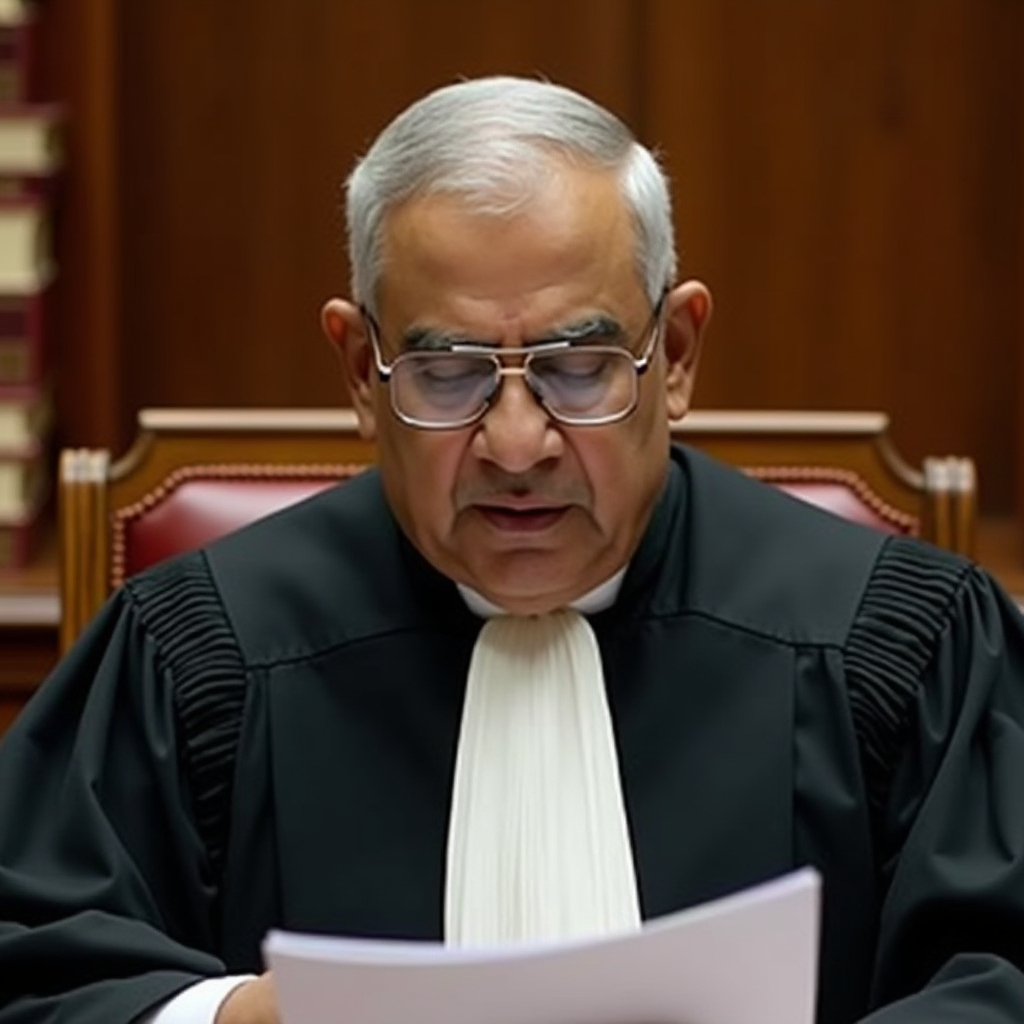
Issues raised
- Whether the Nagraj judgement needed reconsideration by a seven-judge bench?
- Whether the States had to collect quantifiable data to prove the backwardness and inadequacy of the class while being promoted?
- Whether the creamy layer among the Scheduled Castes and the Scheduled Tribes should be barred from obtaining promotions through the reservation?
Arguments advanced by the parties
Contentions raised by the appellants
The appellants raised the following arguments before the Supreme Court to prove that the judgement given in the M. Nagaraj case was unconstitutional and needed reconsideration:
- Shri KK Venugopal appeared before the court. He stated that the need for collecting quantifiable data with the aim of showing the backwardness of the community was contradictory to the judgement delivered by the nine-judge bench in the Indira Sawhney case. It was stated that if the Scheduled Castes and Scheduled Tribes have been added to the presidential list as per Article 342 of the Indian Constitution, then there would not be any need to highlight the quantifiable data showing the backwardness all over again. The Attorney General, KK Venugopal, argued that the Constitution of India had already mentioned that the Scheduled Castes and the Scheduled Tribes were ‘backwards’ in nature, which is socially and economically excluded. A clear definition is laid down to distinguish the Scheduled Castes and Scheduled Tribes from the other classes. This means that there are no further tests that can be imposed to verify the backwardness and inadequacy of their class.
- Another argument came up based on the assumption that the principle of creamy layer is applied to the Scheduled Castes and the Scheduled Tribes, which is a big risk that the court is willing to take. It is important to understand the differences between the other backward classes and the Scheduled Castes and Scheduled Tribes. These aspects cannot be ignored by a constitutional court and it has to keep in mind that equality is a fundamental right that needs to be safeguarded at all costs.
- It was further contended that once the presidential list of Scheduled Castes and Scheduled Tribes is prepared by the President under Article 342, it can only be modified by the Parliament. The concept of the “creamy layer,” which was mentioned in the Indira Sawhney judgement, was not applied to the Scheduled Castes and Scheduled Tribes and the judges in the Nagaraj case misread that decision and have applied this concept to the Scheduled Castes and Scheduled Tribes.
- It was further stated that the judgement in Nagaraj case did not mention any test for setting the “adequacy for representation in service,” which is of very much importance for determining the percentage of the Scheduled Castes and the Scheduled Tribes in the total population of India at every stage of promotion. For this purpose, they suggested that the roster in R.K. Sabharwal vs. The State of Punjab (1995) can be utilised.
- Furthermore, Ms. Indira Jaising, on behalf of the appellants, claimed that the judgement given in the Nagaraj case needed reconsideration. Articles 16(4A) and 16(4B) do not flow from Article 16(4) but from Articles 16(1) and 14 of the Indian Constitution, and the claims that were made by the Scheduled Castes and Scheduled Tribes were based on the reading of Articles 14, 15, 16, 16(4A), 16(4B) and 335 of the Constitution.
- Finally, they concluded by contending that the exercise that was done in the case of Nagaraj, reading down a constitutional amendment to make changes in the presidential list by the States valid,” was unconstitutional as only the Parliament has the power to amend the list under Articles 341 and 342 of the Constitution. Further, there could be no sub-grouping within the Scheduled Castes and Scheduled Tribes as the same is not acceptable, as has been held in the case of Indira Sawhney and E.vs. Chinnaiah vs. The State of A.P. (2004).
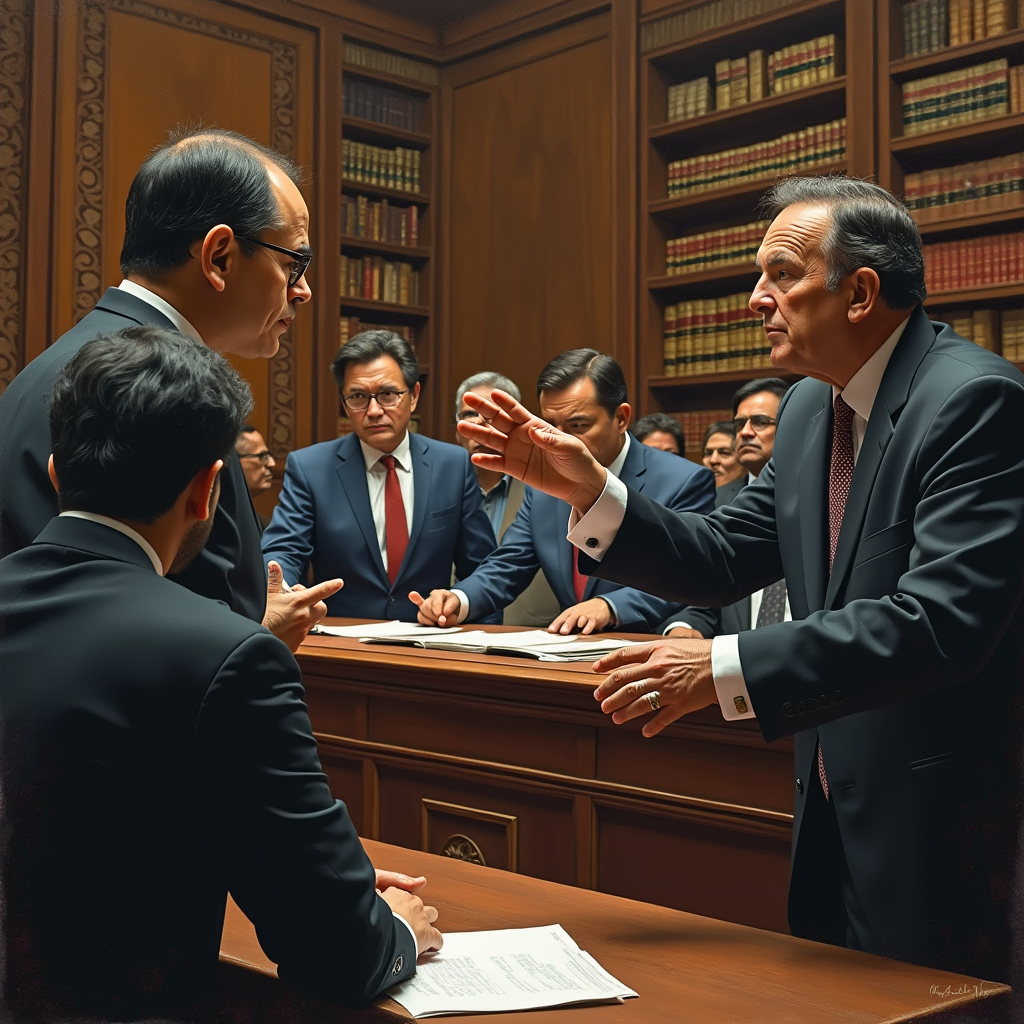
Contentions raised by the respondents
On the other hand, the following contentions were raised by the respondents. They wanted to prove that the judgement given in the case of Nagaraj was very valid and constitutional and, therefore, was not required to be reconsidered:
- Shri Shanti Bhushan appeared before the court and defended the judgement of Nagaraj by contending that it did not talk about the Scheduled Castes and Scheduled Tribes while talking about the backwardness of classes. It referred to the class of posts and the requirement of quantifiable data was for the class of posts. They relied on the case of Keshav Mills Company Limited vs. Commissioner of Income Tax, Bombay (1965) and stated that reconsideration of Nagaraj case would also mean reconsideration of this case.
- Further, Shri Rajeev Dhavan, on behalf of the respondents, stated that the judgement in Nagaraj case should be considered as upholding the constitutional changes that brought provisions like Articles 16(4A) and 16(4B). It was contended that they do not violate the basic structure and are thus constitutional. This judgement upheld equality by prohibiting indefinite extension of reservations, upholding the limits of 50% on reservations, and also by incorporating the concept of “creamy layer” on Scheduled Castes and Scheduled Tribes.
- They stated that the concept of the creamy layer was made in order to ensure that only those people who deserved reservations actually received them, excluding others who were undeserving. It upheld the value of equality by excluding the unequals in a particular class who are not equals to the others in that category.
- It was also contended that Articles 341 and 342 of the Constitution, as highlighted by the appellants, have nothing to do with the reservations in this particular case. These are exclusively for identifying the citizens who can be classified into the categories of Scheduled Castes and Scheduled Tribes. Even if the concept of the creamy layer is said to be within the scope of these Articles, the higher courts have the power to enforce fundamental rights. Since the case of Nagaraj involved constitutional amendment, the above-mentioned Articles cannot prevent such amendment from being put through the test of the basic structure doctrine.
- Those who were in favour of collecting quantifiable data pointed out that people can go to large extents when it comes to getting a promotion and thus, a check on the backwardness of a person was only the right thing to do. Moreover, it did not harm the integrity of any person or cause any loss; instead, it worked as a double-check. Also, they saw the collection of data as a responsibility of the government, removing which would prove that the government only wanted to lessen its own burdens.
- Those in favour of the inclusion of the creamy layer argued that the truly backward will be able to avail themselves of the benefits of the reservation in promotions even after including the creamy layer because, in the case of promotions, at a certain level of employment, all the Scheduled castes and Scheduled tribes fall into the same economic bracket. Thus, the argument of violation of equality only works at entry levels and not at promotions. Excluding the creamy layer might only be beneficial for the general class. Since India has a history of discrimination at the workplace where they do not consider the Scheduled castes and Scheduled tribes as meritorious, including all the backward classes, even from the creamy layer, they can be given a chance to prove their merit in front of the general categories.
- The respondents also argued that the social backwardness of the Scheduled Castes and Scheduled Tribes must be evaluated at each stage since, when such candidates reach a high level in public services, they are done with their backwardness. Further, this absence of backwardness would be grounds for cancelling any further reservations for them. This was contended by Shri Rakesh Dwivedi, learned senior advocate, while he was supporting the claims of the respondents. He further stated that after promotion, there is a possibility that an employee may cast off his backwardness when he reaches a fairly high stage in any service. Thus, it would be appropriate to reserve nothing further for such candidates.
Laws discussed in Jarnail Singh vs. Lachhmi Narain Gupta (2018)

Article 14 of the Indian Constitution
Article 14 guarantees equality before the law and equal protection of laws under the right to equality. Equality before law is a negative concept since it does not permit for the special treatment of the unequals in society, whereas equal protection of laws is considered to be a positive concept that was adopted in America since it allows for the unequal treatment of the unequals in society, like people belonging to the backward classes. In this case, the court noted that the inclusion of creamy layers within the reserved category of candidates would violate the provisions of equality. They are on par with the general category and thus it demands the separation of creamy layers from the reservation, which is given exclusively to the scheduled castes and scheduled tribes.
Article 16(4) of the Indian Constitution
Article 16(4) gives power to the State to make special provisions regarding the reservation of appointments for backward classes who are not adequately represented by the State. This Article played an important role in the whole debate surrounding reservations for promotions. Before the introduction of Article 16(4A), the courts highlighted this article, which talked about reservations in appointments as well as in promotions but the same was later overruled in the Indira Sawhney case. It was later, through the amendments, that provisions were added to this article, specifically talking about reservations in promotion, consequential seniority and unfilled reserved vacancies.
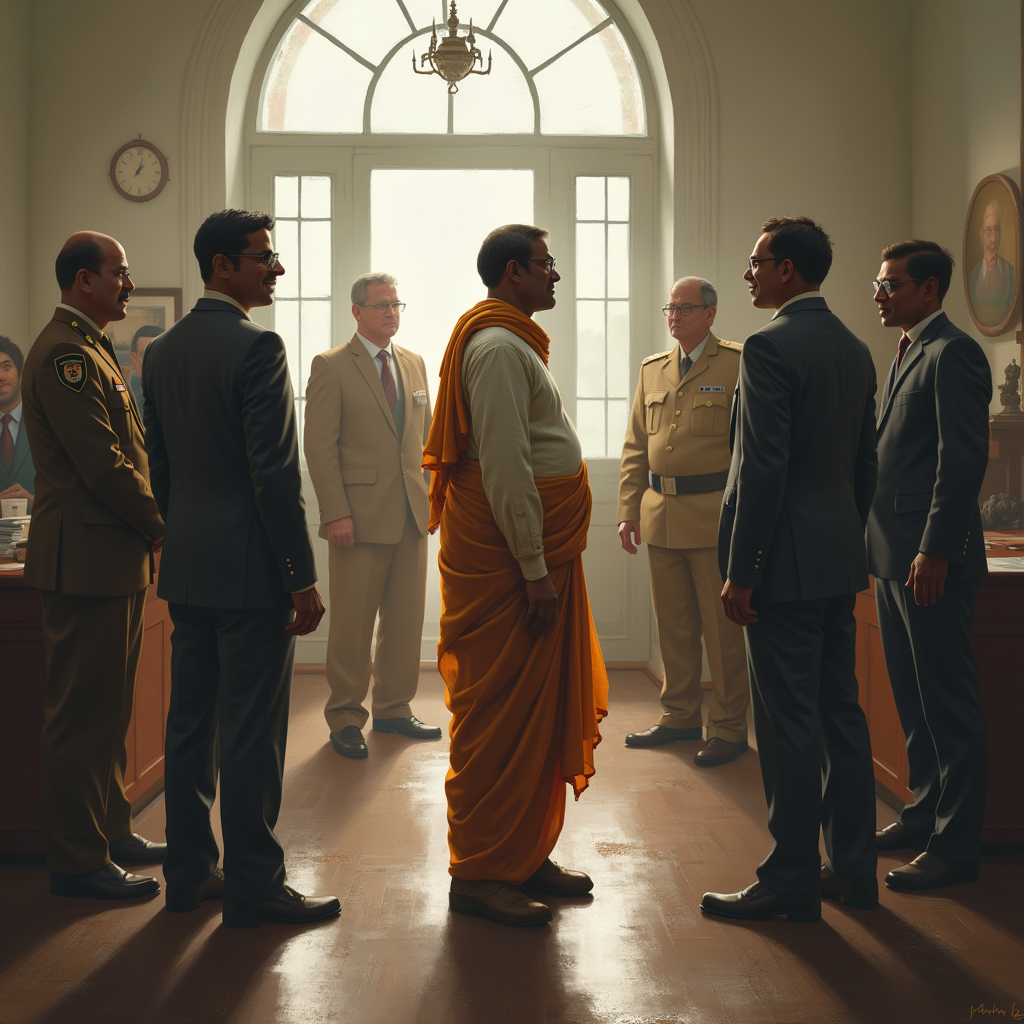
Article 16(4A) of the Indian Constitution
Article 16(4A) was added through the Constitution (Seventy-seventh Amendment) Act, 1995, that even applied the reservation provisions to the promotion to any posts in services under the State for the people belonging to Scheduled Castes and Scheduled Tribes who are not adequately represented. This provision was challenged in the Nagaraj case but was upheld by the Supreme Court. However, this present case further reconsidered the judgement of Nagaraj, favoured the same and held this provision to be valid.
Article 16(4)B of the Indian Constitution
This provision was added through the Constitution (Eighty- first Amendment) Act, 2000, which talked about the unfilled vacancies of reservations in a particular year. This was also challenged in the Nagaraj case and contended to be violative of the Indira Sawhney judgement, but the court in the Nagaraj case held it to be constitutionally valid and even in the present case, the Supreme Court agreed with the conclusions reached in the Nagaraj judgement and rejected it to be reconsidered. This clause states that the unfilled reserved vacancies from one year will be treated as a separate class of vacancies that are to be filled in the next year and will not be included in the 50% ceiling limit for that year.
Article 46 of the Indian Constitution
This is one of the directive principles that provides for the duty of the State to promote the educational and economic interests of the Scheduled Castes and the Scheduled Tribes and further protect them from injustice and any form of exploitation in society. According to Article 46, provisions have been added under Articles 15 and 16 in order to advance and promote their interests in society. This was one of the reasons for which Articles 16(4A) and 16(4B) were added, which were in conflict in the present case. Even the court highlighted this objective with which amendments to the Constitution were made.
Article 335 of the Indian Constitution
Article 335 states that when making appointments under the state or union, the claims of the scheduled castes and scheduled tribes must be taken into consideration. Further, it also provides for the proviso that was added through the Constitution (Eighty-second Amendment) Act, 2000, to ensure relaxation of marks and reservations in promotions in the services under the Union or the State. This insertion or extension of rights, even in promotions, was challenged before the court in the Nagaraj case but the same was upheld.
Articles 341 and 342 of the Indian Constitution
This case revolves around the constitutional validity of the reservation in promotions for the scheduled castes and scheduled tribes and these two categories are specifically mentioned under Articles 341 and 342 of the Constitution. These provisions give power to the president to prepare a list of those who shall be deemed to be Scheduled Castes and Scheduled Tribes. Further, it also gives power to the Parliament to include or exclude any group or tribe from that presidential list.
Judgement delivered by the Supreme Court
Though the case of M. Nagaraj was requested by the petitioners to be reviewed by the seven judge bench, it was laid down before a five judge bench of the Supreme Court.
The Supreme Court concluded that the judgement in the Nagraj case does not need to be referred to a seven-judge bench. Along with this, the provision that the State has to collect quantifiable data showing the backwardness of the Scheduled Castes and Scheduled Tribes is contrary to the nine-judge bench in the Indira Sawhney case, making this provision invalid. It was also seen in the Indira Sawhney Case that any discussion on the ‘creamy layer’ has no relevance in the context of Scheduled Castes and Scheduled Tribes. Further, the Supreme Court confirmed the application of the creamy layer to promotions for Scheduled Castes and Scheduled Tribes as held in the Nagraj Judgement. It had resulted in thousands of employees being denied their due promotions. The court viewed the principle of the creamy layer as a principle of identification and not of equality.
Justice Nariman observed that the whole purpose of reservation is to give a chance to the backward classes to move forward so they can be on an equal footing with the other citizens of India. If the individuals of the creamy layer are included in this reservation, then the backward classes will remain as backward as they were, as they will likely not get many opportunities in front of the advanced backward layer of people. He also pointed out that those people who do not form a part of the backward classes because they are classified under the creamy layer are excluded from the benefits of reservation.
The court noted that only when people belonging to the creamy layer are excluded will the real backward people be given a chance because those belonging to the creamy layer are seen as on par with the general category candidates. Thus, providing them with the reservations will prove to be futile and it would violate the principles of equality under Article 14 of the Indian Constitution.
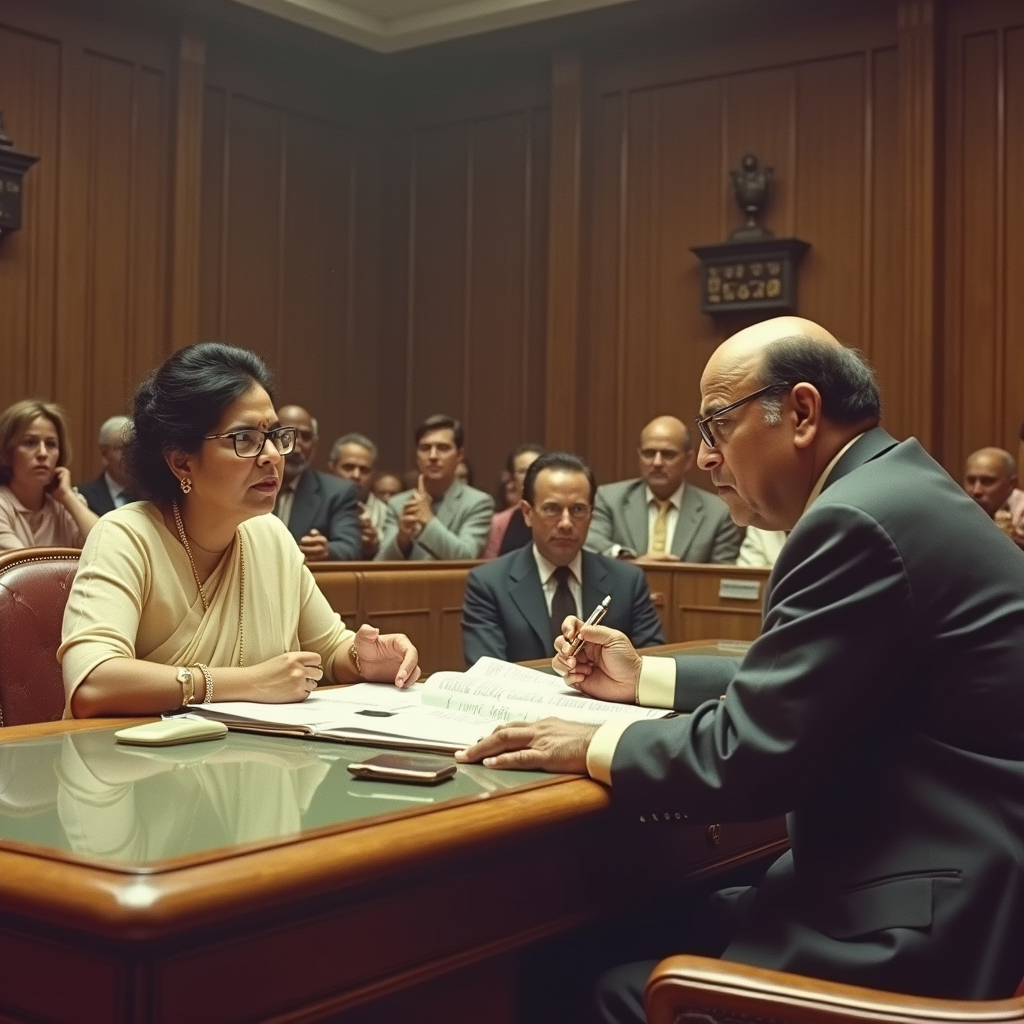
Rationale behind the judgement
The Supreme Court analysed the Nagaraj judgement and even the other judgements that were argued by the appellants and the respondents. It concluded that the collection of the quantifiable data on backwardness was contradictory to the Indira Sawhney judgement and therefore invalid as per law. The court also clarified that if the topmost people under Scheduled Castes and Scheduled Tribes claimed all the opportunities, then it would not serve the purpose, thus the concept of creamy layer would be applied in the reservation system for promotions. They further clarified that it would not affect the presidential list anyhow because it would only lead to the exclusion of the creamy layer from the benefit of reservations.
The Supreme Court noted that there is no need for reconsideration of the Nagaraj judgement since every concept regarding the reservations has been made clear enough. The court considered the concept of a creamy layer not only as an identifying principle but also as an equality principle. It also reflected upon its authority to deny the benefit of reservations to certain groups falling within the creamy layer and also the authority of the Parliament for deciding on the presidential lists.
Precedents relied on
There are a number of important cases referred by the parties and even the court while deciding on the issues raised before a five-judge bench of the Supreme Court in this case. Few landmark judgements that were referred and considered by the court are-
Indira Sawhney vs. Union of India (1992)
In this case, the Supreme Court held that the reservation as per Article 16(4) of the Constitution is only applicable to initial appointments and does not extend to promotions because it would then have a bad effect on the efficiency of service of co-workers and would amount to a violation of the right to equality. Further, a 50% ceiling for reservations was provided by the court and it cannot in any event exceed the limit of 50% reservations in any job or service under the Union or State. These two legal points were essentially highlighted by the parties and noted by the Supreme Court in the present case. The Court also noted that the reservations now extend to promotion as well, since they were upheld in the case of Nagaraj.
M. Nagaraj vs. Union of India (2006)
This is the landmark judgement wherein the court upheld the constitutional validity of Articles 16(4A), 16(4B) and 335 that talked about the reservation in promotion. However, the court also noted that the backwardness of Scheduled Castes and Scheduled Tribes must be proved before giving them reservations, which was in direct conflict with the earlier decision in the Indira Sawhney case and thus called for reconsideration. The Court stated that three limitations would apply before giving any reservation in promotion: firstly, proving the inadequate representation of a class through quantifiable data; secondly, showing that the class that is benefiting from the reservation is backward; and lastly, ensuring that the efficiency of service is not compromised.
However, the court in the present case held that since it was in direct conflict with the Indira Sawhney judgement, the backwardness need not be proved.
Keshav Mills Company Limited vs. Commissioner of Income Tax, Bombay (1965)
In this case, there was a tussle on the question of whether the contention of the respondent to reconsider the case before it was correct and on what grounds it should go for reviewing or revising its earlier view taken in two of the cases. The court in the present case considered those grounds, which stated that the court should reconsider only when it is in the interests of the public good or for any other compulsive reason. When the Supreme Court decides any question of law, it is binding on the other courts as per Article 141 of the Constitution of India and thus, certainty must also be maintained. The reconsideration should depend on the nature of the error for which a plea for reconsideration has been filed, the impact of that error on the public good and whether the reversal of the decision would lead to inconvenience and difficulties.
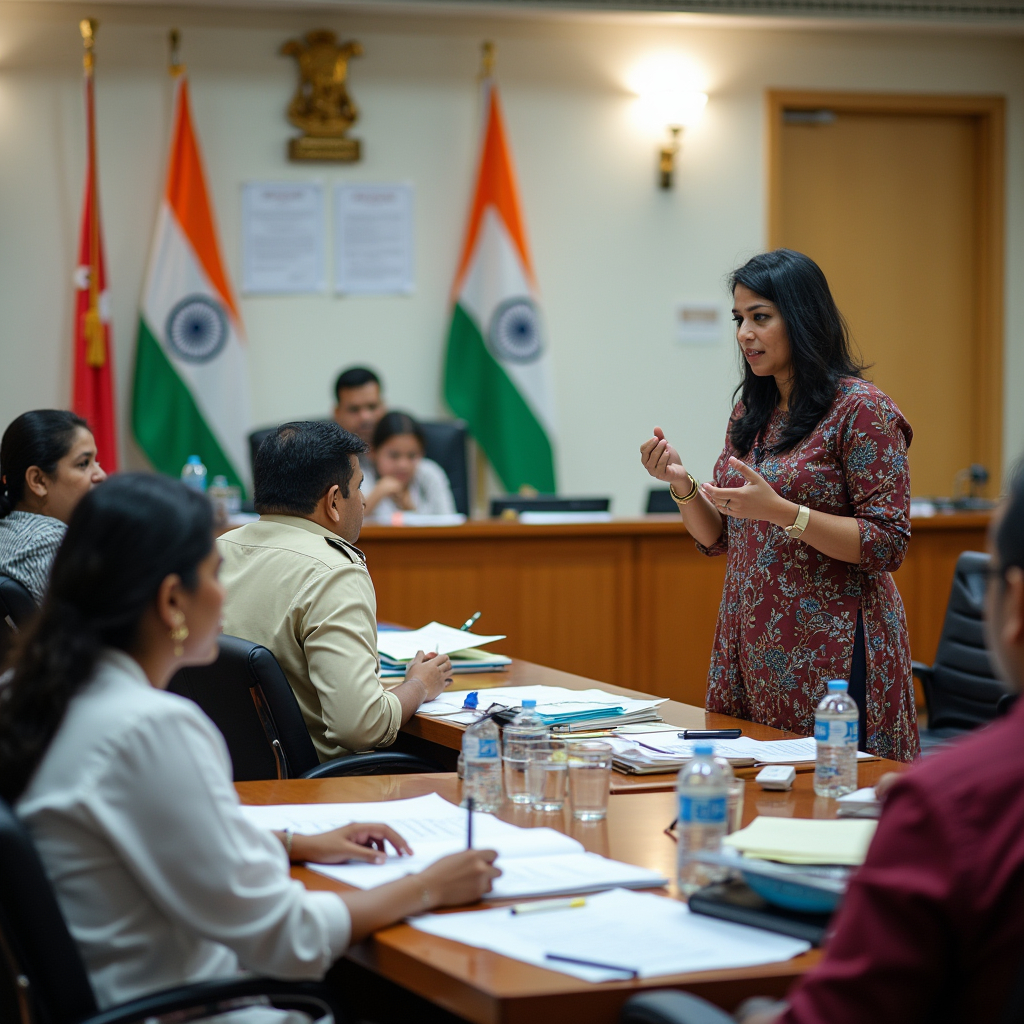
E.vs. Chinnaiah vs. State of A.P. (2005)
The issue involved in this case was whether the legislature of the state can sub-classify Scheduled Castes for their reservation in public employment and education in order to achieve an equitable reservation goal. The Supreme Court denied the further classification of scheduled castes and scheduled tribes by the state legislature, noting the exclusive right of the president to caste notification under Article 341. This decision ensured that the Scheduled Castes and Scheduled Tribes were to be treated as a unitary group with no further classification. However, the court in the present case noted that the judgement in the Nagaraj case recognised the concept of the creamy layer and thus this will be applicable and those falling under the creamy layer will not be given the reservations. This contradicted the E.vs. Chinnaiah case, which prohibited any sub-classification within the Scheduled Castes and Scheduled Tribes communities.
Judgements that further discuss Jarnail Singh vs. Lachhmi Narain Gupta (2018)
B.K. Pavitra vs. Union of India (B.K. Pavitra II case) (2019)
In this case, a writ petition was filed that challenged the validity of the Karnataka Determination of Seniority of Government Servants Promoted on the Basis of the Reservation Act, 2002. This Act ensured consequential seniority for the government’s Scheduled Castes and Scheduled Tribes’ employees. The major issue was whether inadequacies were shown by the State of Karnataka in relation to reservation in promotion and whether the act was valid as per Articles 14 and 16 of the Constitution. Earlier, the two judge bench of the Supreme Court noted that there was a lack of quantifiable data to support the assertion of the State for providing reservations in promotions. The Karnataka government made a new law, i.e., the Reservation Act of 2018, relying on the report of the Ratna Prabha Committee. So, another petition was filed against this legislation.
The Supreme Court held that the current Act was in compliance with the decision given in the Nagaraj case, where it was noted that the concept of creamy layer applied to the OBCs but was exclusive to Scheduled Castes and Scheduled Tribes. It was also noted that the State had now even collected the quantifiable data and did not intend to overrule the earlier decision of this court. Thus, the court upheld the validity of the Act of 2018.
In the present case, the court had done away with the collection of quantifiable data to be collected by the State.
Jarnail Singh vs. Lachhmi Narain Gupta (2022)
This case is also referred to as Jarnail Singh II and it was a clarificatory judgement given by a three judge bench of the Supreme Court. In this case, the court clarified four major points. Those were:
- The tool for determining inadequacy in representation is at the discretion of the State, and it is a matter of executive discretion.
- It is mandatory and not merely discretionary to determine the inadequacy of representation as a prerequisite for giving the benefit of reservation.
- The unit for determining inadequacy was not the service but the cadre.
- The judgement given in the case of M. Nagaraj will operate prospectively and not retrospectively.
The court in this case clarified the position held in Nagaraj and further in Jarnail Singh I (the present case); however, it failed to consider the point of issue in the creamy layer concept. Also, through the judgement given in Jarnail Singh I and M. Nagaraj, it can be said that the concept of creamy layer that was imposed on the OBCs has also been imposed on the Scheduled Castes and Scheduled Tribes. Though Jarnail Singh I ruled that the concert of quantifiable data for Scheduled Castes and Scheduled Tribes was invalid, it will not impact the M. Nagaraj judgement. This is because the concept of creamy layer applicable to OBCs will also be applicable to SCs and STs mechanically.

Criticism against the judgement
It has been presumed by the court in this case that the case of M. Nagaraj applied the creamy layer concept to the Scheduled Castes and the Scheduled Tribes but this was not the case in reality as it did not expressly apply this test. Thus, it is to be noted that there is ambiguity around the reservation policy in promotions. Further, it has been criticised for giving vague and unwarranted conclusions on the test of the creamy layer. It did not make clear whether the test of creamy layer should be applied only to the reservations in promotion or also to the reservations during the selection of jobs. It was said to have muddled the law dealing with reservations in promotions. Thus, this called for a reference of the M. Nagaraj case to a larger bench of the Supreme Court in order to give more clarity to the reservation policy for promotions.
It was also argued by the people after this landmark judgement that this also freed the state government from the responsibility of collecting quantifiable data, which should be done in order to maintain transparency and effectiveness of decisions on reservations. This gave excessive authority to the government over the subject of reservations.
Conclusion
India has a disturbing history of caste and class-based discrimination. The backward classes, the Scheduled castes and tribes, and the untouchables were all ill-treated and denied opportunities in every field of work or education. They required reservations not as a welfare measure but as a right of representation, a right that had been denied to them for many years. The circumstances did not change by giving them reservations in government jobs and posts, as they still face discrimination and could never achieve a high rank no matter what their merit was. A reservation in promotion was a major step taken by the judiciary, as not everyone was in favour of this reservation. It is commendable that our government safeguards the interests of the less privileged classes and that our Judiciary is strong enough to make the right decisions after facing a lot of criticism. Even the Judiciary is not perfect but as seen in this case, it kept reviewing cases and amending laws so that the people of our country could get what they each deserved. However, it is often said that the case failed to analyse and consider the applicability of the creamy layer test in depth. Due to some uncertainty, the current government also requested that the Supreme Court reconsider the judgement given in the case of Jarnail Singh. This judgement stands as a pivotal ruling that balances the need for social justice through reservations with the principles of equality and meritocracy. By removing the requirement to prove backwardness for Scheduled Castes and Scheduled Tribes, the Supreme Court reinforced the constitutional mandate of uplifting historically marginalised communities while preserving the integrity of public administration.
Frequently Asked Questions (FAQs)
Which case is known as the ‘reservation in promotion’ case?
The case of Jarnail Singh vs. Lacchmi Narain Gupta (2018) is known as the reservation in promotion case.
Which judgement was contested in the present case?
The judgement given in the case of M Nagaraj vs. Union of India (2006) was contested in the present case.
Is reservation in promotion allowed?
Yes, reservation in promotion is allowed as per Section 16(4A) of the Constitution.
What was the landmark judgement in which the 50% ceiling limit was prescribed?
Indira Sawhney vs. Union of India (1992) was the main landmark judgement which set the ceiling limit of 50% for reservations.
Is it mandatory to determine the inadequacy of representation as a prerequisite for giving the benefit of reservation?
Yes, it is mandatory and not discretionary to determine the inadequacy of representation as a prerequisite for giving the benefit of reservation.
References
- https://www.scobserver.in/the-desk/reservation-in-promotion?slug=article-16-4a-77th-amendment
- https://www.ijlrs.com/papers/vol-7-issue-1/5.pdf
- https://legal-wires.com/case-study/case-study-jarnail-singh-v-lachhmi-narain-gupta-ors/
- https://llbmania.com/case-analysis/jarnail-singh-v-lacchmi-narayan-gupta-2018-10-scc-396/
- https://www.scconline.com/blog/post/2022/01/31/reservation-in-promotion-the-6-issues-settled-by-supreme-court-on-collection-of-quantifiable-data-showing-inadequacy-of-representation/
Students of Lawsikho courses regularly produce writing assignments and work on practical exercises as a part of their coursework and develop themselves in real-life practical skills.
LawSikho has created a telegram group for exchanging legal knowledge, referrals, and various opportunities. You can click on this link and join:
Follow us on Instagram and subscribe to our YouTube channel for more amazing legal content.
 Serato DJ Crack 2025Serato DJ PRO Crack
Serato DJ Crack 2025Serato DJ PRO Crack







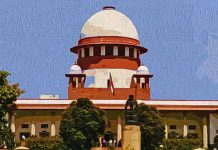


 Allow notifications
Allow notifications



